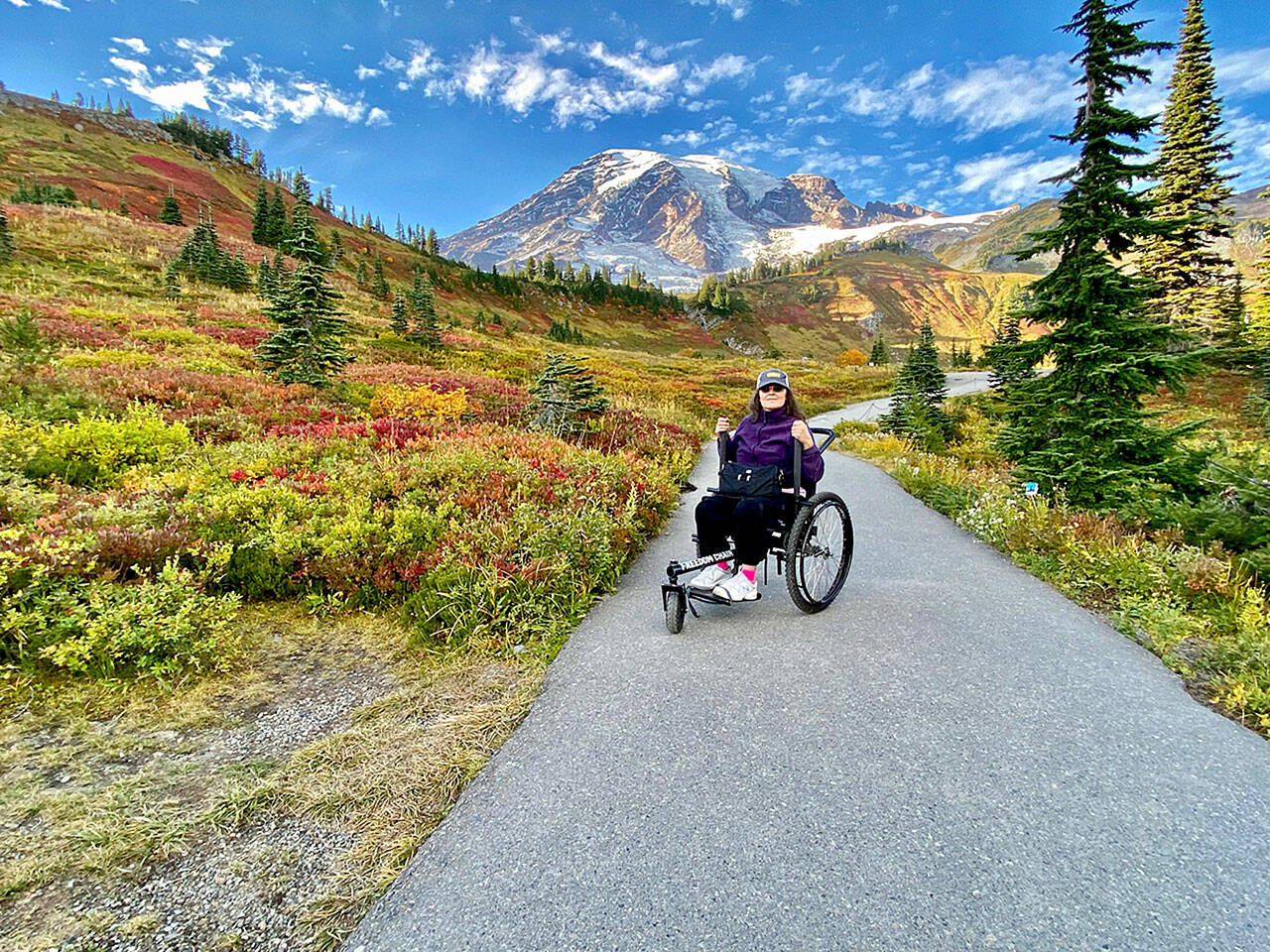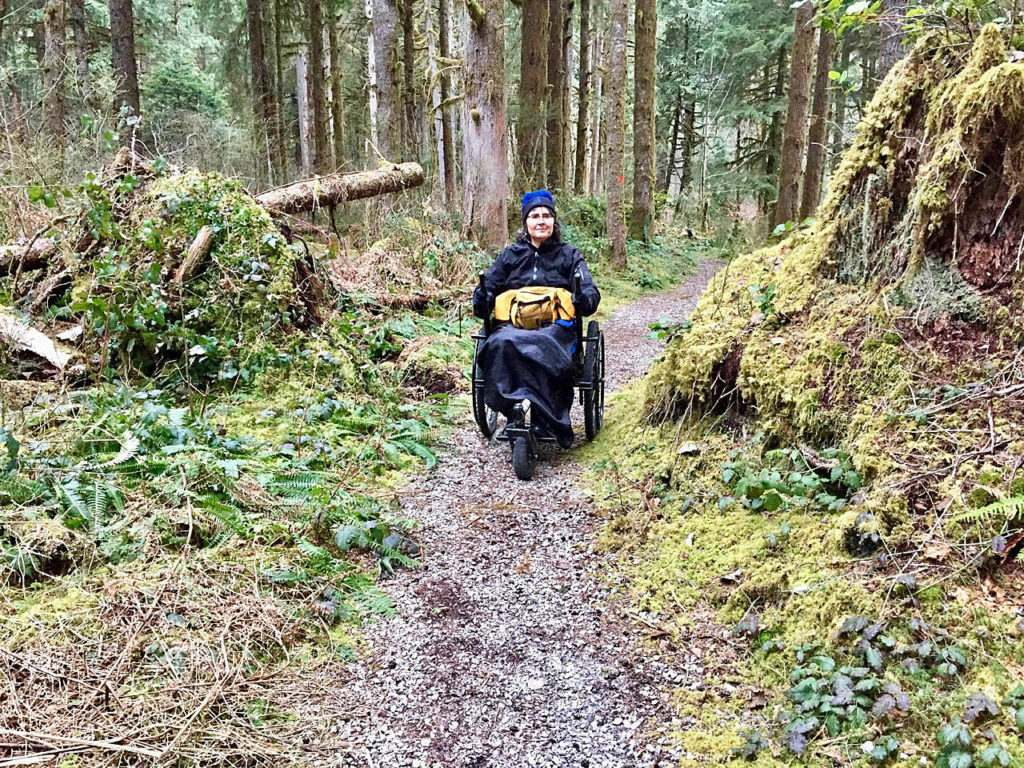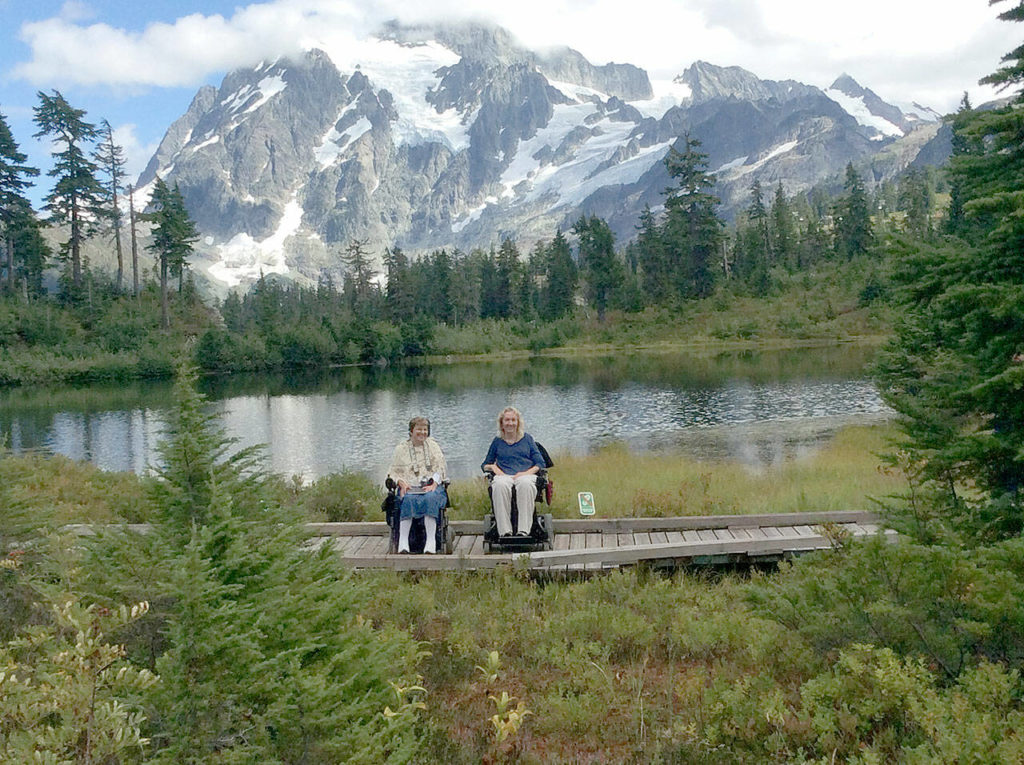Washington Trails Association
WTA’s Hiking Guide has a new filter — one that helps users determine whether or not a trail is wheelchair-friendly.
We’ve been working on this tool for a while, relying on insight and expertise from a cohort of hikers who use wheelchairs, including Jenny Schmitz of Wheelchair Wandering.
What makes a wheelchair-friendly hike? Our conversations highlighted that there’s much more to identifying hikes as wheelchair-friendly than simply presenting a list of trails. It’s more about empowering the user to make their own choice by highlighting details about surface type, grade and cross-slope (the slant of the trail bed).
WTA’s new accessibility filter highlights what trails might be good for a wheelchair user. More information about each trail is provided in the hiking guide entries.
Jenny summed it up succinctly. “The first question to answer is: can you even get a wheelchair on it? Then, depending on who you are and what kind of wheelchair you use, you need all this other information to tell if a trail might be open to you.”
As we discussed what this tool might look like, we also realized accessibility extended beyond the trail itself. Hiking Guide readers need to know whether the trailhead and bathrooms were wheelchair-accessible in order to fully enjoy a day on trail.
Some wheelchair hikers have had to turn around at the trailhead or shortly past it because a trail identified as “accessible” wasn’t actually right for them. It’s better to provide lots of details, and then let each individual choose.
How to use it: Navigate to WTA’s Hiking Guide or the Hike Finder Map. Click on Trail Features & Rating and look for the Accessibility section. Click on the box and hit Search and you’ll get a list of results. These are hikes identified as wheelchair-friendly.
The filters in the Hiking Guide and your My Backpack profile include language explaining what makes a trail wheelchair friendly.
If you see one you like, click through, and the hiking guide entry will give more details about the trail and what makes it good for a wheelchair user. These are presented in a section titled Accessibility Notes, or directly in the text of the hike description.
Create an account on wta.org to save hike ideas. You can even make notes and check off hikes you’ve completed.
In order to provide details like this we needed some on-the-ground research. So last summer, Jenny and a cohort of other people who hike using wheelchairs helped us identify several trails that are confirmed wheelchair-friendly. We used that information and cross-referenced it with land manager trail info to identify several more trails as wheelchair-friendly, just to start us off.
In addition to working with Jenny, we also consulted Syren Nagakyrie of Disabled Hikers, who pointed out that developing this tool would help not only wheelchair hikers, but hikers who are otherwise mobility-challenged, because wheelchair-friendly trails are often fairly flat and smooth. That means users who are mobility-limited or looking for stroller-friendly trails should be able to find what they need by using this tool as well.
This new filter should point you in the right direction, but don’t forget to check trip reports. Conditions change from day to day, with even seemingly permanent features of a trail changing according to weather and maintenance. Trees fall. Trails wash out in floods or become eroded over the season.
Also, read the Hiking Guide description to get a more detailed idea of what to expect out there. And if you know of a trail you think should be indicated as wheelchair-friendly, please let us know in the comments below!
We’re thrilled this is finally available for users. And like so many features on our site, it’s a work in progress that will continue to be improved and refined over time.
So far, we’ve got more than 120 hikes identified as wheelchair-friendly, and that list will continue to grow as we get more input about other wheelchair-friendly trails from our site users.
Washington Trails Association promotes hiking as a way to inspire people to protect Washington’s natural places. Learn more at www.wta.org.
Three accessible hikes
Erinswood: This accessible trail built by WTA volunteers is a great option for exploring the forests beneath Heybrook Ridge right next to the town of Index. This meandering loop through lush forest is complete with the sounds of a rushing creek.
Old Sauk ADA Loop: This loop near Darrington tours through an iconic Cascade forest, complete with moss-draped branches and ferns galore. The viewpoint is a great place to take a break while enjoying views of the Sauk River valley before heading back to the trailhead.
Padilla Bay: This Skagit County trail provides an up-close look at the unique ecology of this arm of the Salish Sea, The flat and wide gravel trail follows the shore of the Padilla Bay estuary, providing vistas of both salty tidal flats and farm scenery. This is a great place for birding.
For more information on all of these hikes, and other wheelchair-friendly hikes, go to wta.org/hikingguide.
Talk to us
> Give us your news tips.
> Send us a letter to the editor.
> More Herald contact information.



























